817 FIXING A NEW TERRIER BREED
FIXING A NEW TERRIER BREED
by David Hancock
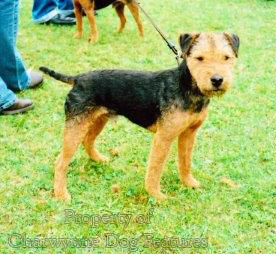 From time to time in the dog world a 'new' breed appears; it can be the recognition of a long-established one never before registered as purebred or having distinct or even unique breed type, with the old Dutch spaniel breed, the Markiesje, perhaps falling into that category. It has ancient origins, fell into disuse but now been revived, A new breed can be 'an accident made good', rather like the Kromfohrlander, resulting from a misalliance between two recognised breeds and, to me regrettably, recognised as a distinct type by an ill-advised kennel club. It can be too from an intentional alliance between two pedigree breeds, as illustrated by the 'new' spitz breed of Eurasier, strangely now recognised by our KC. But in terrier breeds of England, we have several breeds not recognised by that body, despite their individuality and identifiable type, such as the Fell, the Patterdale, the Lucas and the Sporting Lucas and the Plummer. Some, like the Sporting Lucas, are registered as breeds with overseas kennel clubs, such as the United Kennel Club of the United States. How is official recognition 'fixed'?
From time to time in the dog world a 'new' breed appears; it can be the recognition of a long-established one never before registered as purebred or having distinct or even unique breed type, with the old Dutch spaniel breed, the Markiesje, perhaps falling into that category. It has ancient origins, fell into disuse but now been revived, A new breed can be 'an accident made good', rather like the Kromfohrlander, resulting from a misalliance between two recognised breeds and, to me regrettably, recognised as a distinct type by an ill-advised kennel club. It can be too from an intentional alliance between two pedigree breeds, as illustrated by the 'new' spitz breed of Eurasier, strangely now recognised by our KC. But in terrier breeds of England, we have several breeds not recognised by that body, despite their individuality and identifiable type, such as the Fell, the Patterdale, the Lucas and the Sporting Lucas and the Plummer. Some, like the Sporting Lucas, are registered as breeds with overseas kennel clubs, such as the United Kennel Club of the United States. How is official recognition 'fixed'?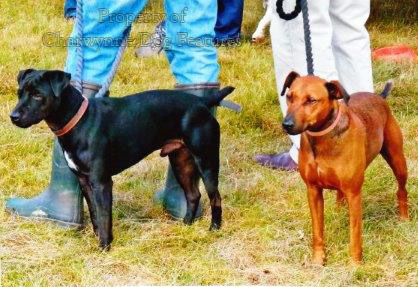
The Parson Russell Terrier now appears at Crufts and has a dedicated, committed following, although many die-hards objected to its pedigree status, with the ubiquitous Jack Russell still appearing in all shapes and sizes. I have been impressed by the Parson Russells owned and bred by Roger Bigland, a genuine terrier-man with a hunt appointment behind him. I have judged both the Lucas Terrier and its cousin the Sporting Lucas Terrier and found really sound dogs amongst the entry. I have seen some impressive black terriers claimed to be Patterdales and some quite excellent red-tan ones said to be Fell Terriers, with only their coat-colour separating them as types. The ones I have seen have had good weatherproof coats, so often a neglected feature in a terrier breed in the show ring. The Plummer has a very distinctive coat - the fiery red markings alone belonging to this breed as a claimed feature. Its creator once wanted his breed recognised by the KC but this was opposed by some fanciers. It is nearly always human energy that gains breed-recognition not breed-uniqueness.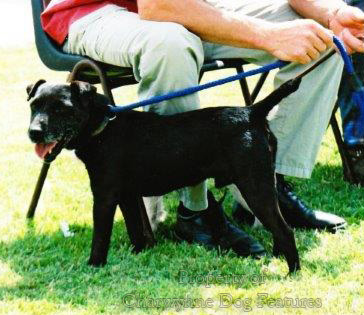
Every breed, whatever its status, has to have a Breed Standard, a word picture of the breed, setting out its key features: size and weight, coat texture and markings, type of head, style of conformation - based on its original function and giving guidance to judges. Sadly, these words can be changed and not always for the better - as that of the Bull Terrier illustrates. Breed clubs can become cliques driven by their wallets, their personal concept ahead of the agreed type and the dreaded exaggerators, as the Fox Terrier exemplifies. Once the breed standard becomes negotiable and weak or wrong-headed judges prevail, that breed is doomed, as the Bearded Collie and the German Shepherd Dog demonstrate. The judges' lists too can be misused; a modern trend is for UK judges to 'put up' exhibits from abroad so that they themselves can subsequently be invited to judge that breed overseas in return - in the home countries of their 'winners'! International judges can be rated - some on ambition and vanity alone! This is bad news for breeds especially young ones. A newly-recognised breed badly needs a good start. 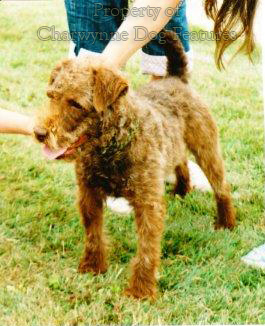
There is of course the importance of the choice of breed title too. What is the essential difference between say a Border or a Lakeland Terrier and a Patterdale or a Fell? Is it coat colour or where the dog was bred and in whose kennel? Is there truly a real difference between a Norfolk and a Norwich Terrier, apart from their set of ears? I have seen 'brown Sealyhams' in Lucas Terrier classes and 'working Sealyhams' in Sporting Lucas Terrier rings. Will there be a case soon for 'any variety terrier' classes without breed status being even claimed? To be a breed there has to be distinctiveness, breed features that make that breed individual. For a breed to remain a breed there has to be a corporate desire amongst its breeders to respect the essence of the breed - what makes it stand apart. For me, unless that breed can carry out its original function then it has no right whatsoever to carry that breed's collective title. 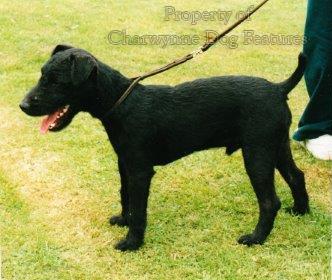
Far too many breeds have been 'fixed' by their own fanciers. If, in an emergent stiff-coated breed, long-coated specimens crop up, don't breed from them. If bassetization crops up, as once happened in the fine old gundog breed of Field Spaniel, don't perpetuate it. If one influential breeder favours an untypical feature manifesting itself in litters, stand up against such disrespect for the real breed. Think function! Look at a KC Bulldog and recall its function, not in the baiting ring - where they were much more like Staffies - but in pinning wayward bulls in the pastures or butchers' yards. Then look at the Dorset and Sussex Bulldogs, so scorned by the KC-type's fanciers, and ask which is correct. Fixing a breed can be easy - but keeping it honest is a real challenge!